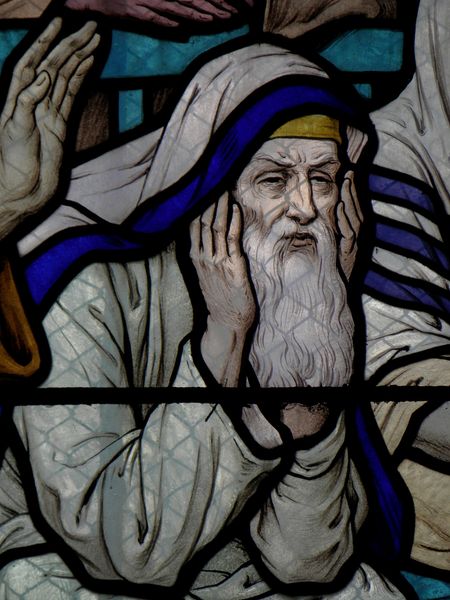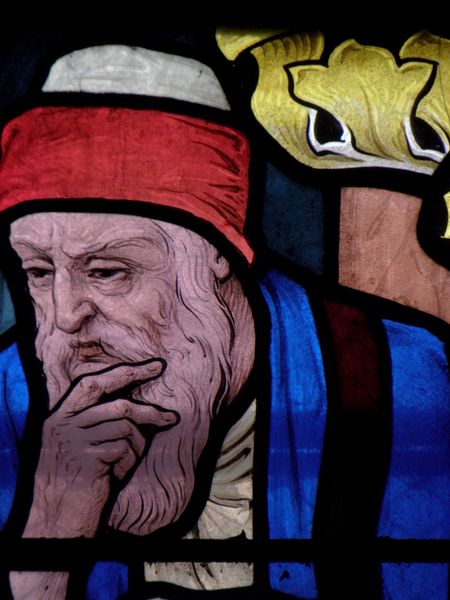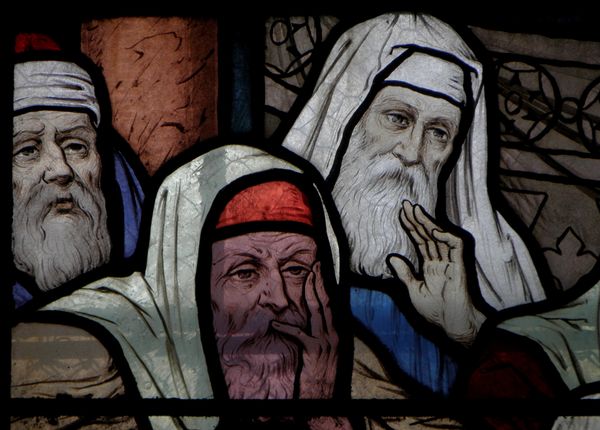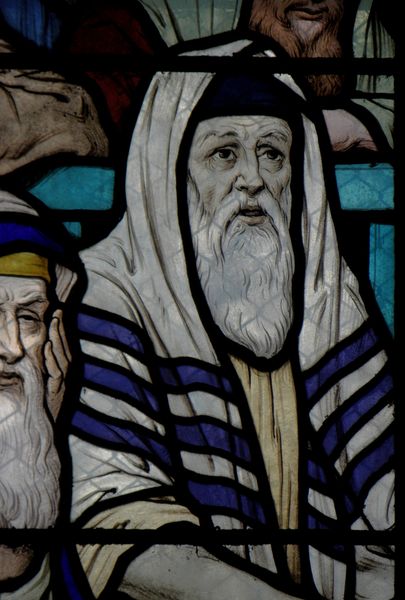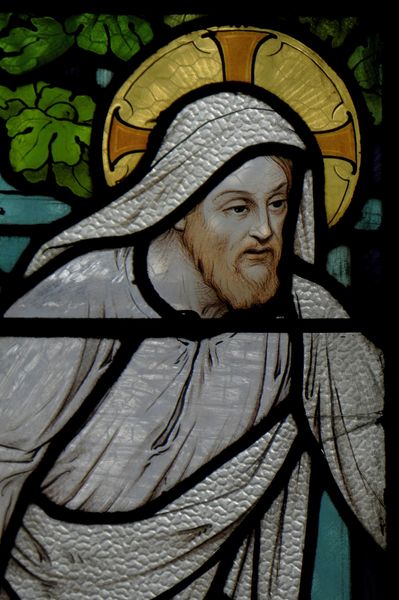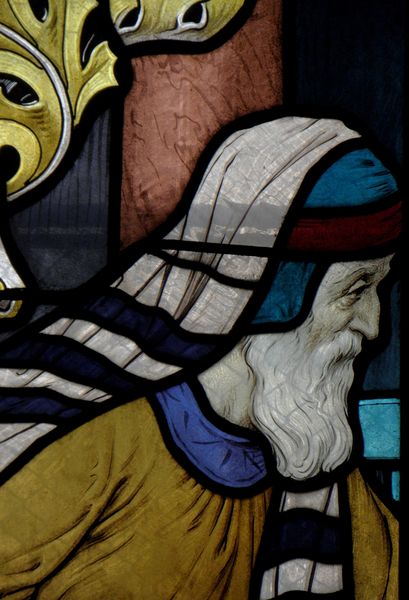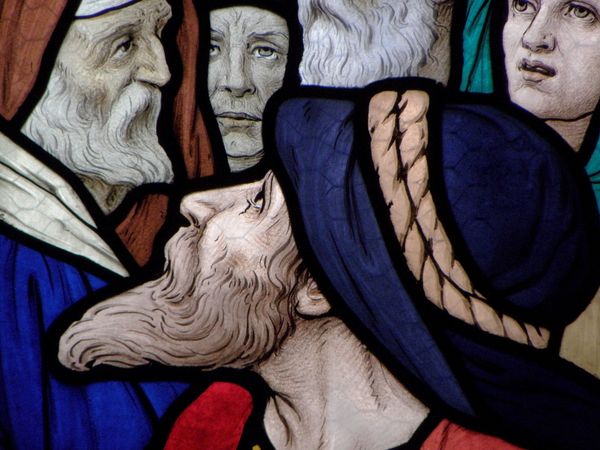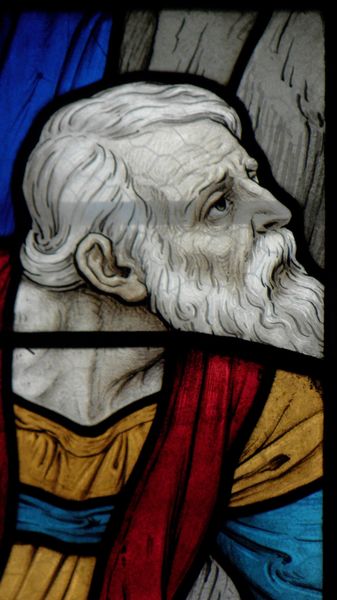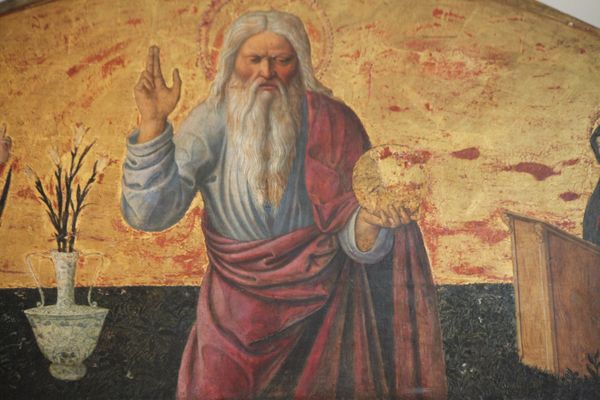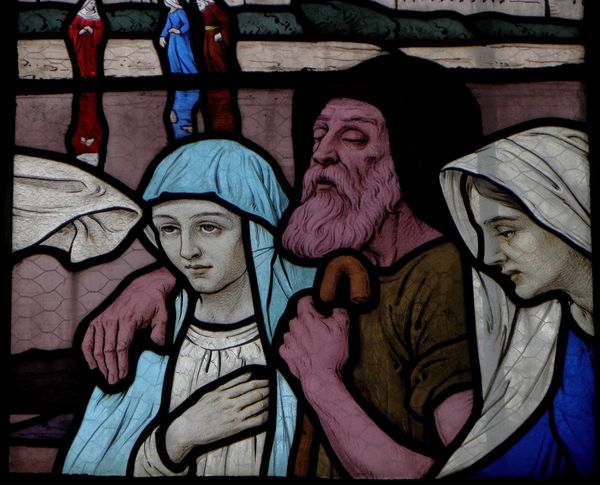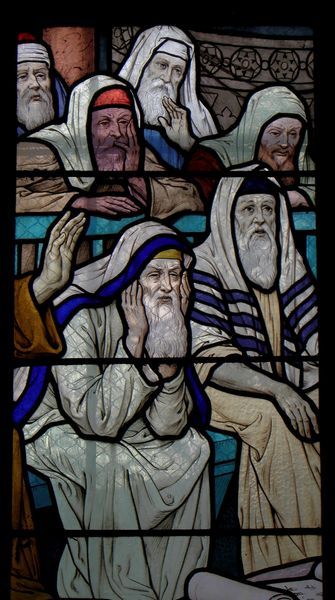
painting, glass
#
portrait
#
public art
#
medieval
#
narrative-art
#
painting
#
sculpture
#
figuration
#
glass
#
history-painting
Copyright: Public domain
Editor: This is a detail from "Life of Christ" in Eglise Saint-Sulpice de Fougères, a stained-glass window created in 1919 by Ludovic Alleaume. The face in this detail strikes me as burdened by the future. How do you interpret this work, especially the imagery used in stained glass? Curator: Stained glass is rarely 'just' stained glass; it’s illuminated narrative. In this face, the artist uses the medium to create a sense of weight and age, suggesting wisdom earned through experience. The colour choices are important - notice the use of blues. What does blue traditionally signify in religious iconography? Editor: Loyalty? Peace? Something celestial? Curator: Exactly. But consider also the placement of blue relative to the figure's hands and face – a visual echo of the heavens influencing mortal action and contemplation. The glass itself isn't merely a canvas but a filter, allowing divine light to shape how we perceive the figure’s expression. Think about that interplay – the earthly versus the divine constantly influencing how the figure's story unfolds. The translucency of the glass transforms storytelling into a spiritual experience, doesn't it? Editor: That’s a wonderful insight. I hadn't considered the glass as an active participant in conveying the narrative. I’m interested in thinking about that relationship to light now. Curator: Indeed. It offers a symbolic depth that a painting, for instance, could only approximate. These symbols are not static but dynamic, changing with the light, constantly echoing the idea of continuous revelation.
Comments
No comments
Be the first to comment and join the conversation on the ultimate creative platform.
